Speaking at the event, Director of the National Museum of History Nguyen Van Doan said that Champa was an ancient country that existed from 192 to 1832 in the central region of Vietnam today. Champa culture was influenced by Indian and Javanese culture, along with its own creations, creating artistic peaks such as My Son, Dong Duong, and Thap Mam styles... Many temple relics and sculptures that still exist today show that Hinduism and Buddhism were the two main religions of the ancient Champa kingdom.
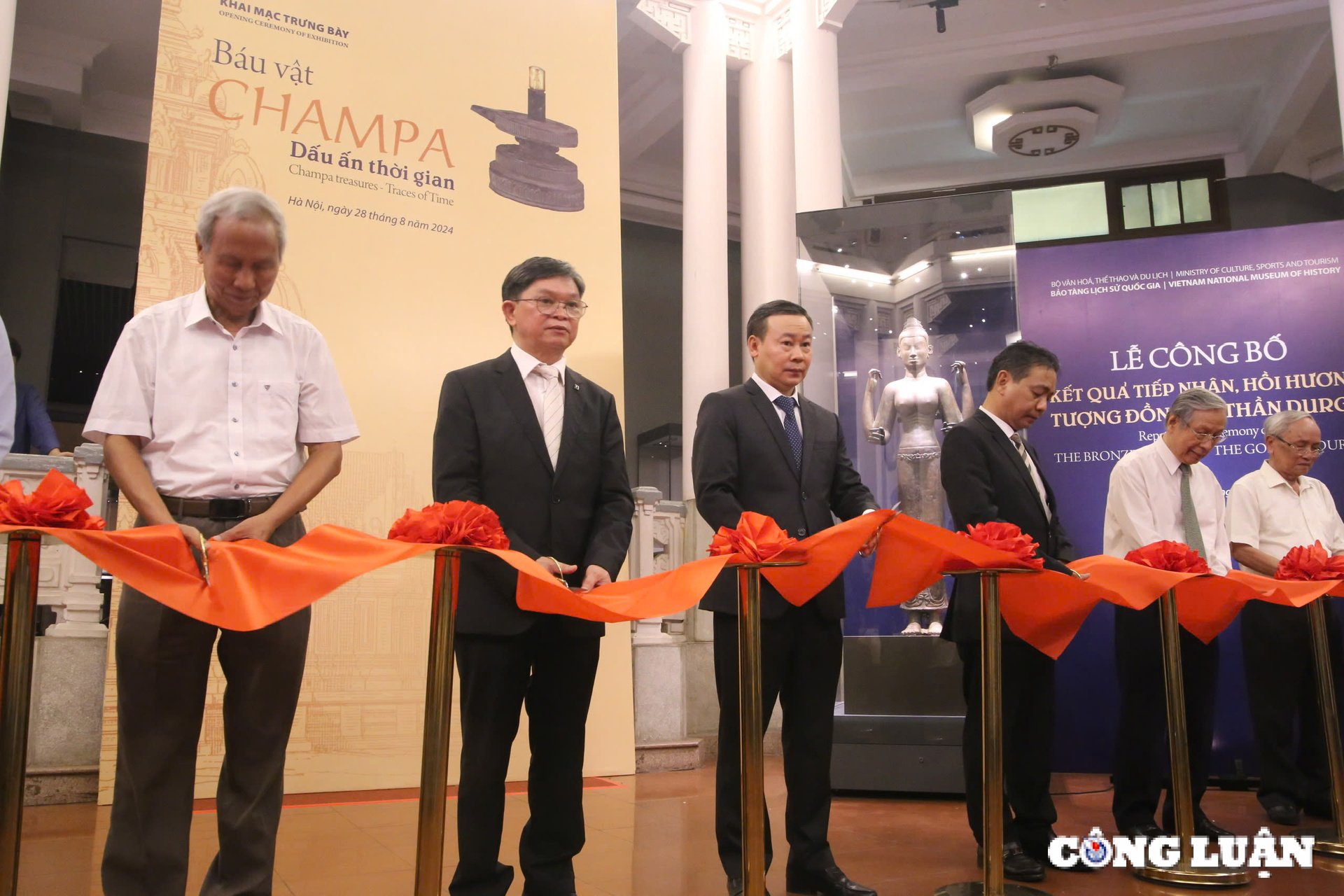
Ribbon cutting ceremony to open the exhibition "Champa Treasures - Marks of Time".
Champa flourished most in the 9th and 10th centuries. After the 15th century, the center of the Champa kingdom gradually moved to the South and took on a new character. From 1692 (when Lord Nguyen established Thuan Thanh Citadel on Champa land) to 1832 (when Champa officially annexed Dai Nam under the reign of King Minh Mang), issues of Champa history, culture, and art seemed to receive little research attention.
Accordingly, the National History Museum has coordinated with other units to research and select more than 60 typical artifacts made of gold and silver from this historical period (17th - 18th century) to introduce to the public, most of which are displayed for the first time.
"Through the exhibition, the National History Museum hopes that the public at home and abroad will have the opportunity to enjoy antiques of unique historical, cultural and artistic value and gain a deeper understanding of a period of Champa's cultural history that seems to be little known, thereby, knowing how to appreciate and raise awareness of preserving and promoting the traditional cultural values of the nation," Mr. Nguyen Van Doan emphasized.
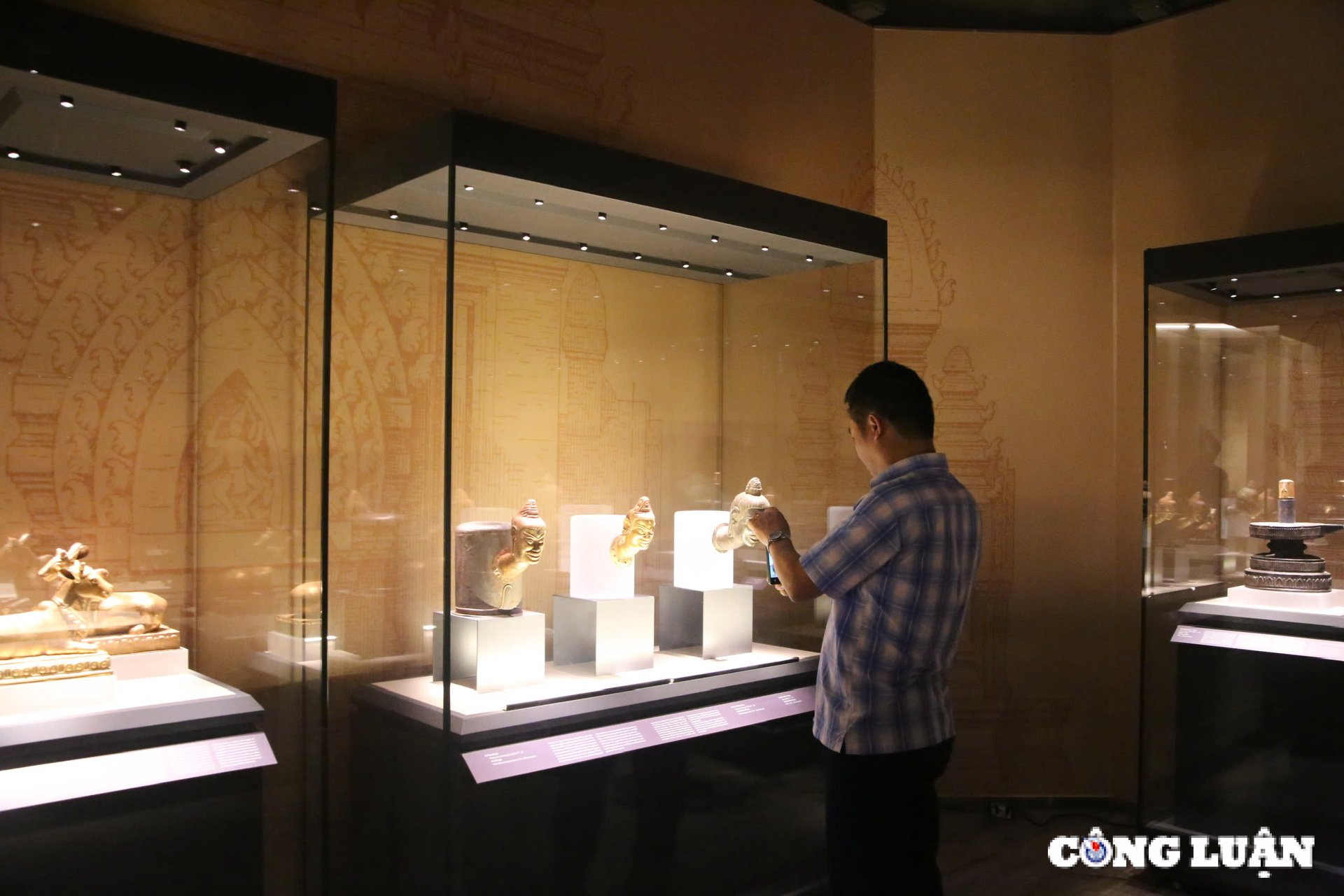
People visit the exhibition space.
The exhibition consists of 2 parts: Statues and religious mascots: Introducing some typical artifacts such as statues of Shiva, statues of male and female gods, statues of Ganesha, statues of Buddha, statues of Bodhisattva Avalokitesvara, Linga - Yoni, kosalinga, heads of Shiva, statues of the sacred bull Nandin... made of gold and silver with precious stones. Like other ancient countries in the region, Champa received and was influenced by both major religions, Hinduism and Buddhism. Therefore, the most popular in Champa heritage are statues of gods, Buddhas and sacred animals, mascots of these two religions.
Jewelry and objects bearing religious symbols and royal authority: Introducing artifacts of the type of jewelry and objects bearing symbols of royal authority and religion, including: earrings, rings, necklaces, hairpins, combs, bracelets, gloves, belts, jewelry boxes, hats, crowns, hairnets... decorated with religious symbols and traditional beliefs of Champa art, especially Hindu gods such as Brahma, Visnu, Shiva, Ganesha, Nandin, Garuda, Naga...
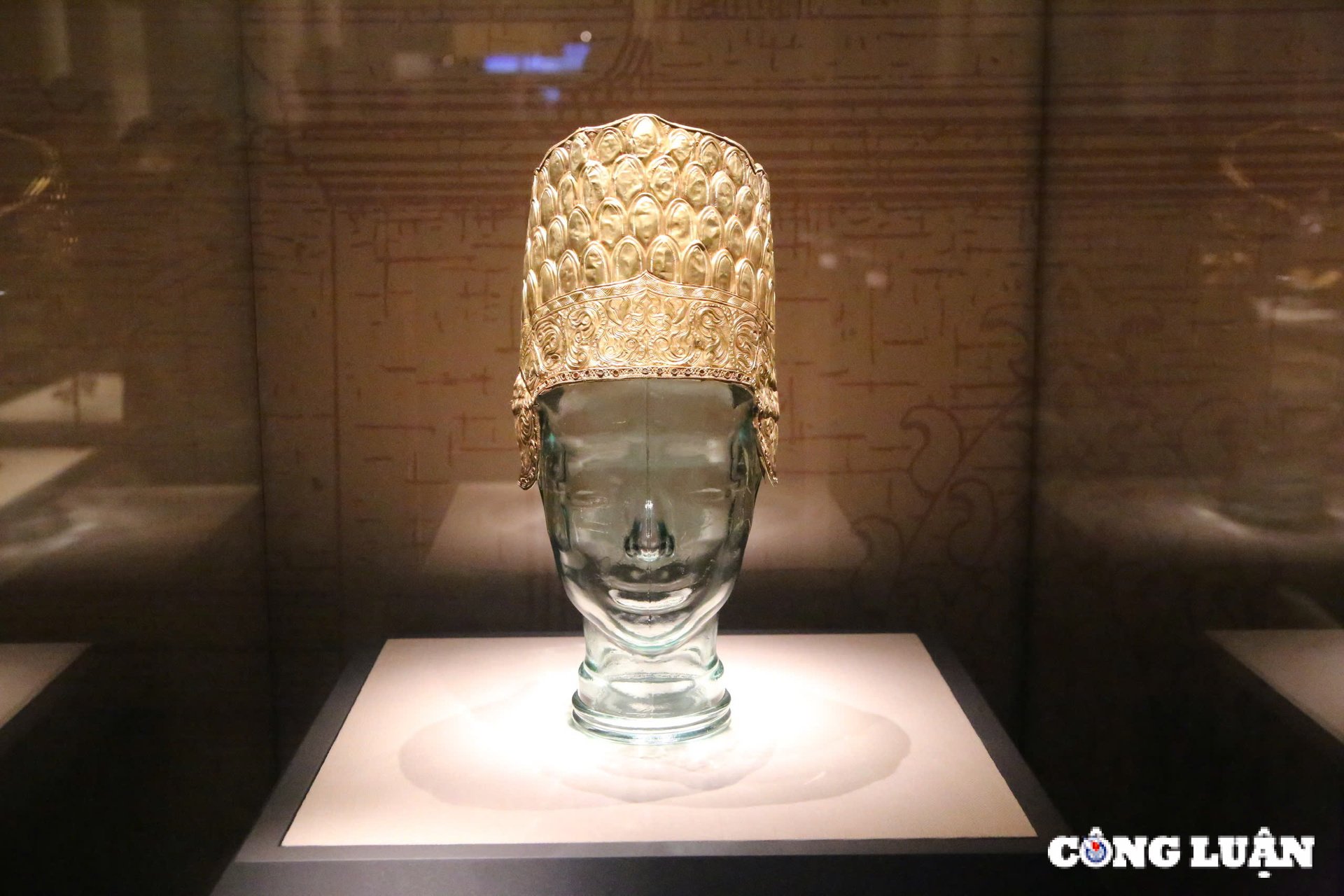
The most popular in Champa heritage are statues of gods, Buddhas and sacred animals, mascots...
These are offerings to the gods or used in the Champa royal family. These artifacts are all very delicately displayed with high technical goldsmithing skills, and have special historical, cultural and artistic values.
According to the National Museum of History, when studying the history and culture of Champa, in addition to the architectural works of temples and towers in the Central region with corresponding artistic styles and chronological frames, since the end of the 19th century, French scholars have known about the precious objects and worshiping objects of the Champa kings and royal family from the historical period from the end of the 17th century to the first half of the 19th century.
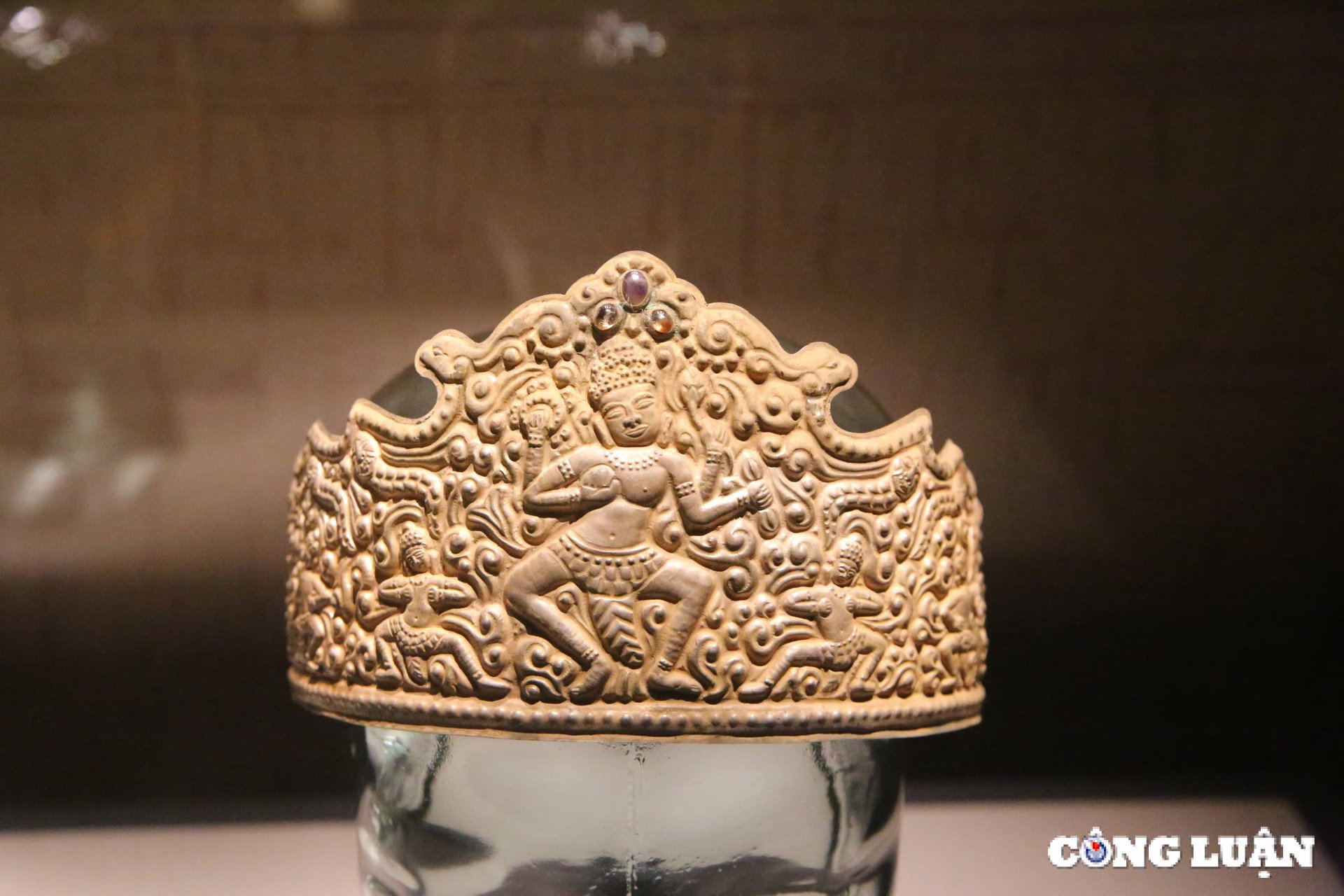
Artifacts on display at the event 'Champa Treasures - Marks of Time'.
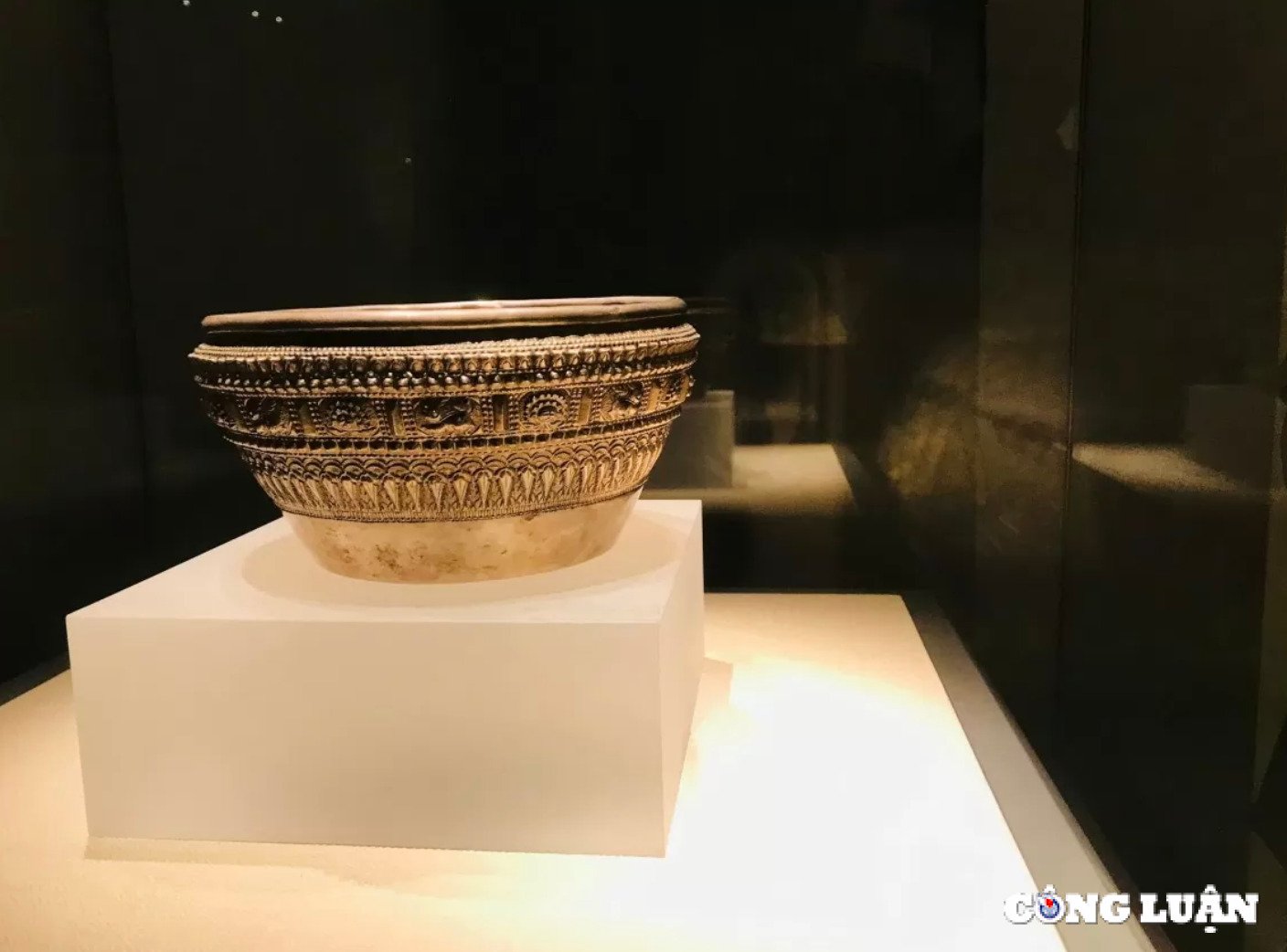
The artifacts are very sophisticated and show a high level of technical goldsmithing. Photo: Bao Thoa
In 1905, two famous French researchers, H. Parmentier and E. Durand, published their research results, introducing in detail the “treasures” of the Cham kings in the journal of the French School of the Far East. Through these documents, we have the first authentic images to identify and evaluate artifacts of this type that are in the collections of museums and private collections at home and abroad.
The exhibition "Champa Treasures - Marks of Time" takes place from August 28, 2024 to October 2024.
Source: https://www.congluan.vn/ngam-60-hien-vat-co-tai-trung-bay-chuyen-de-bau-vat-champa--dau-an-thoi-gian-post309616.html


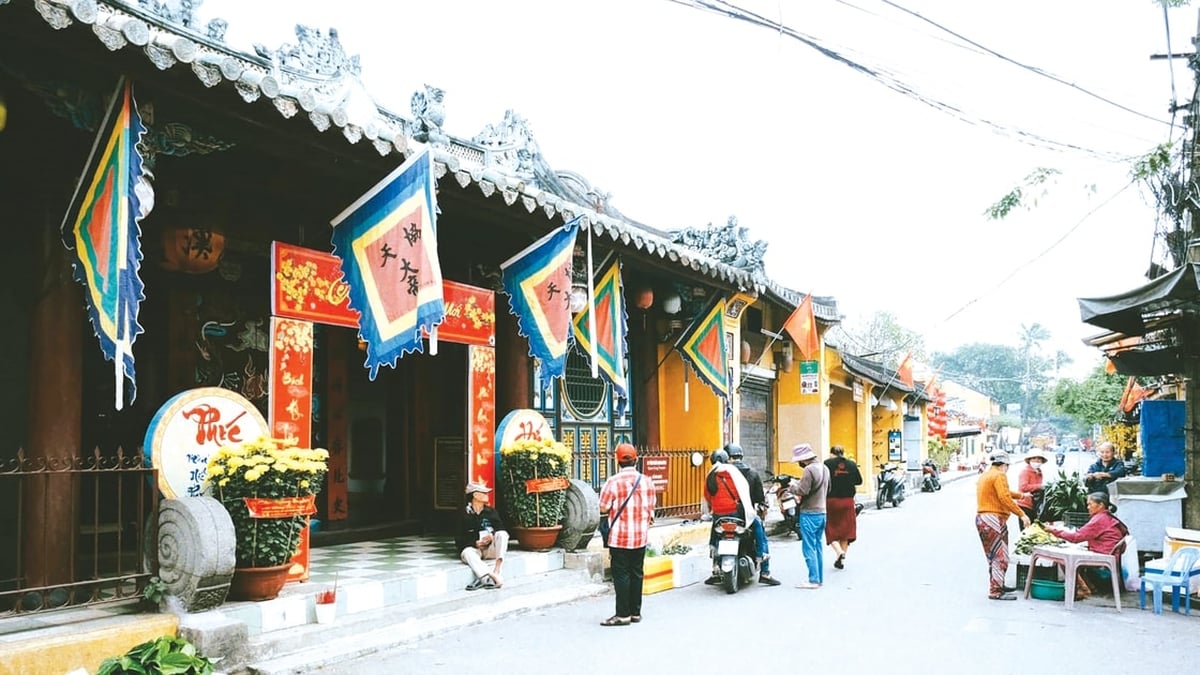


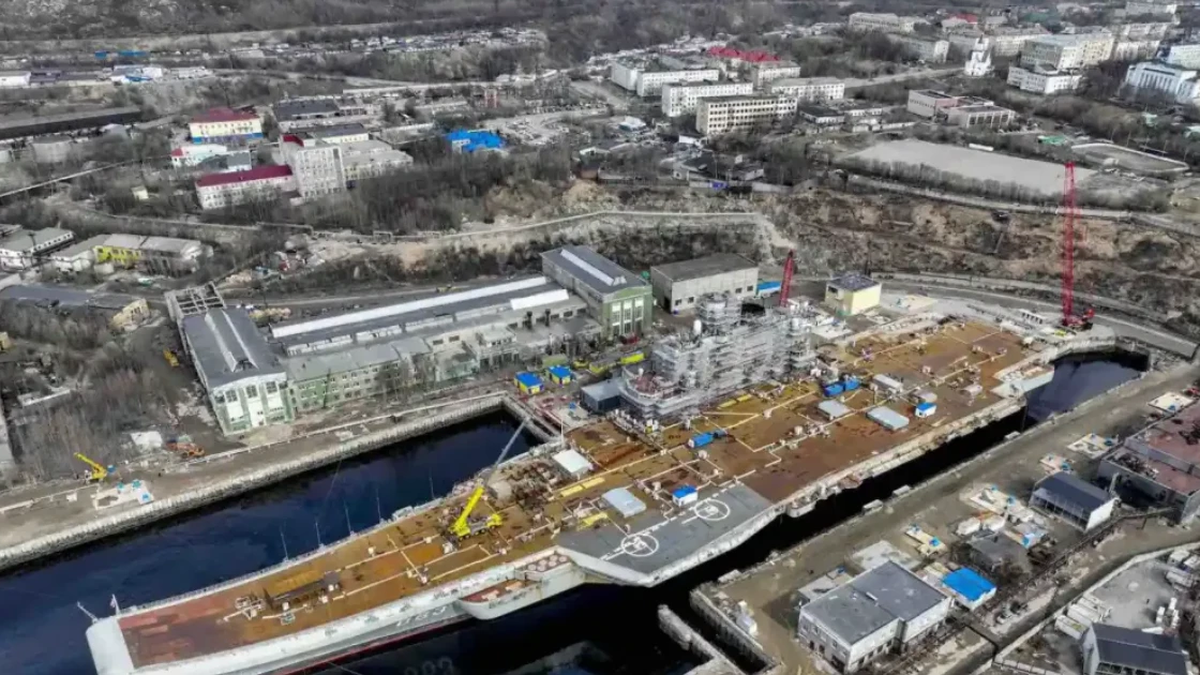
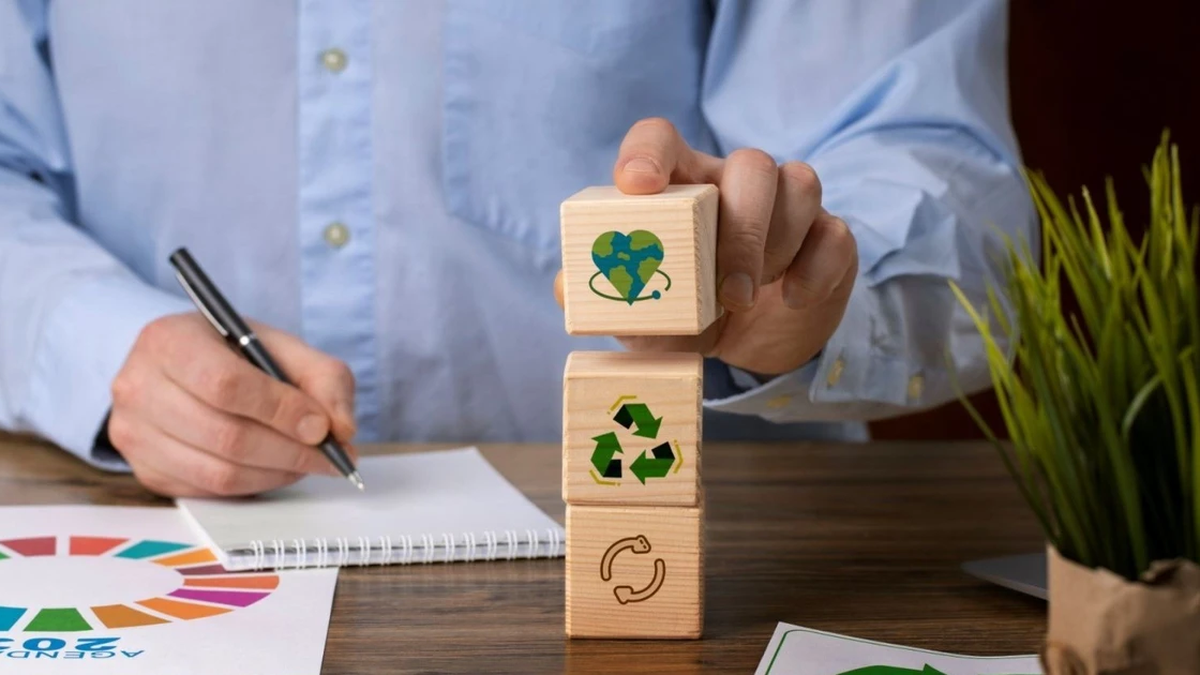
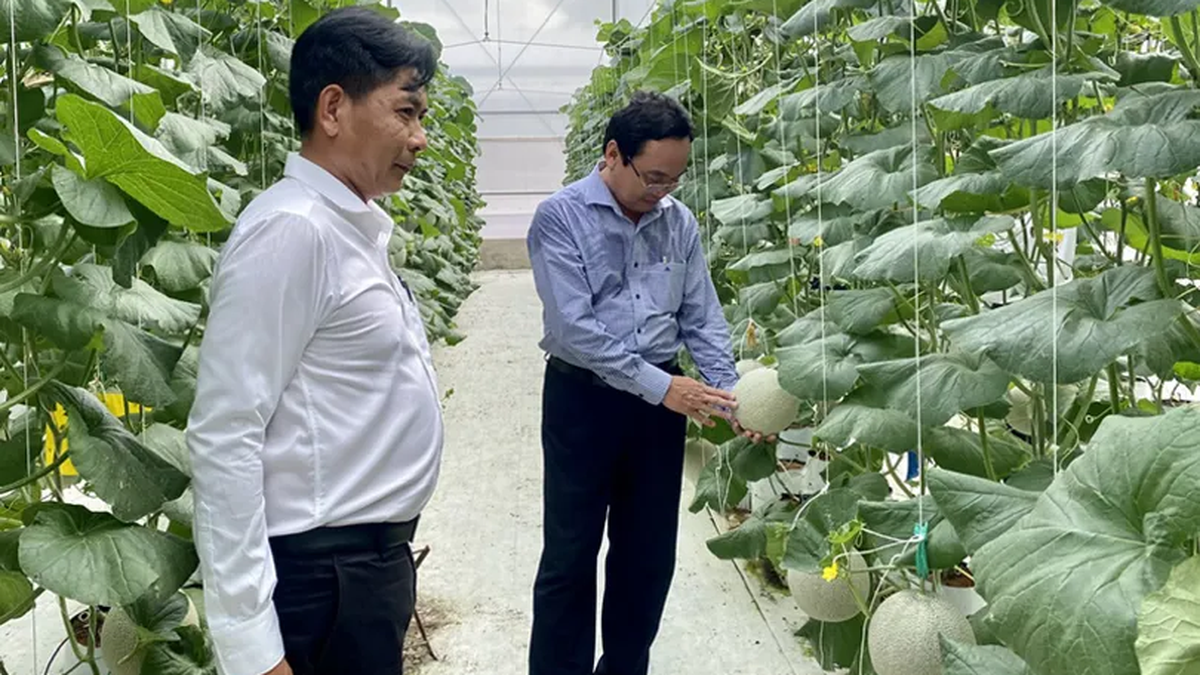
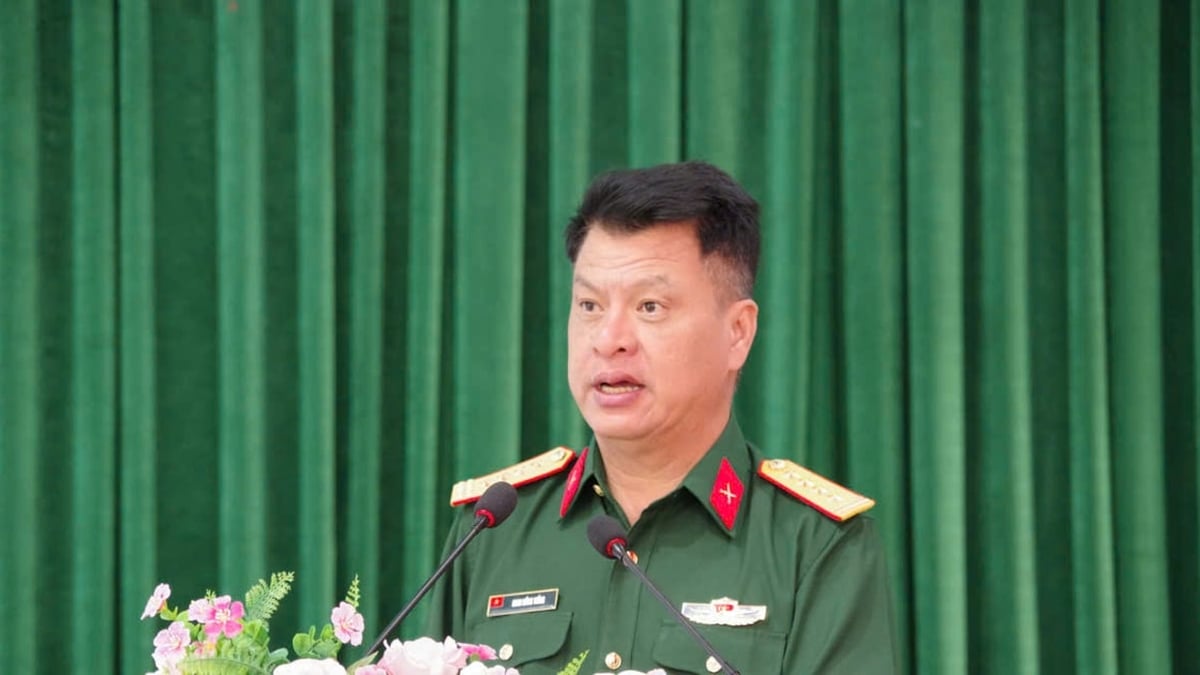
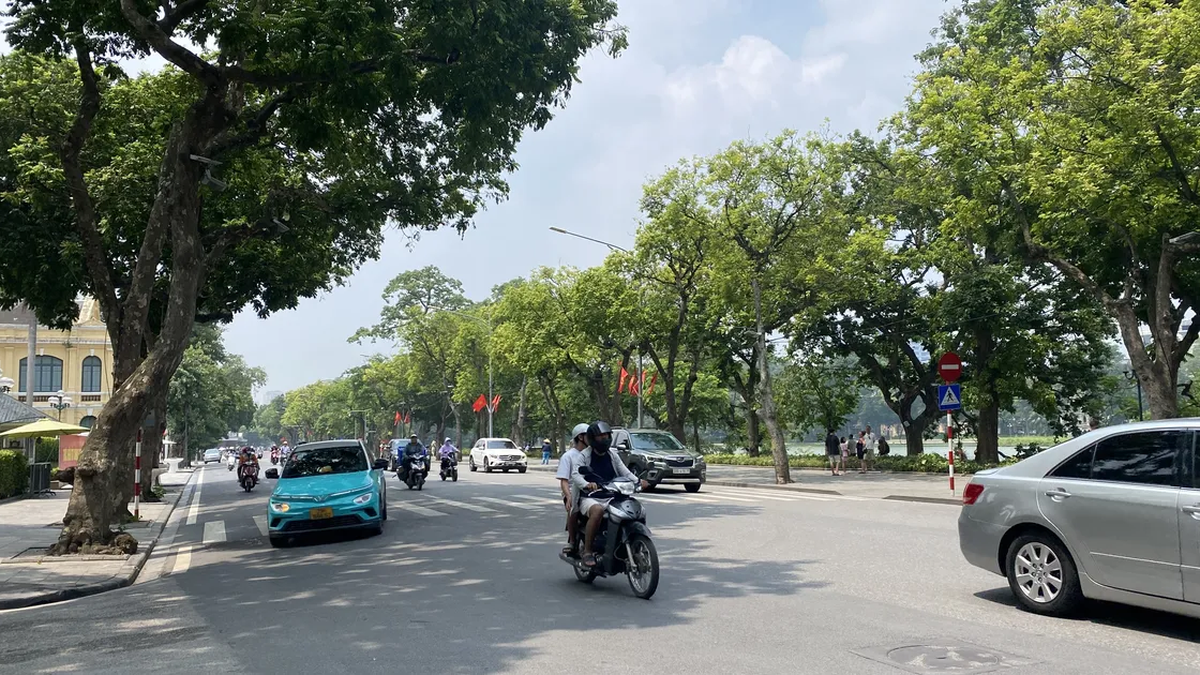
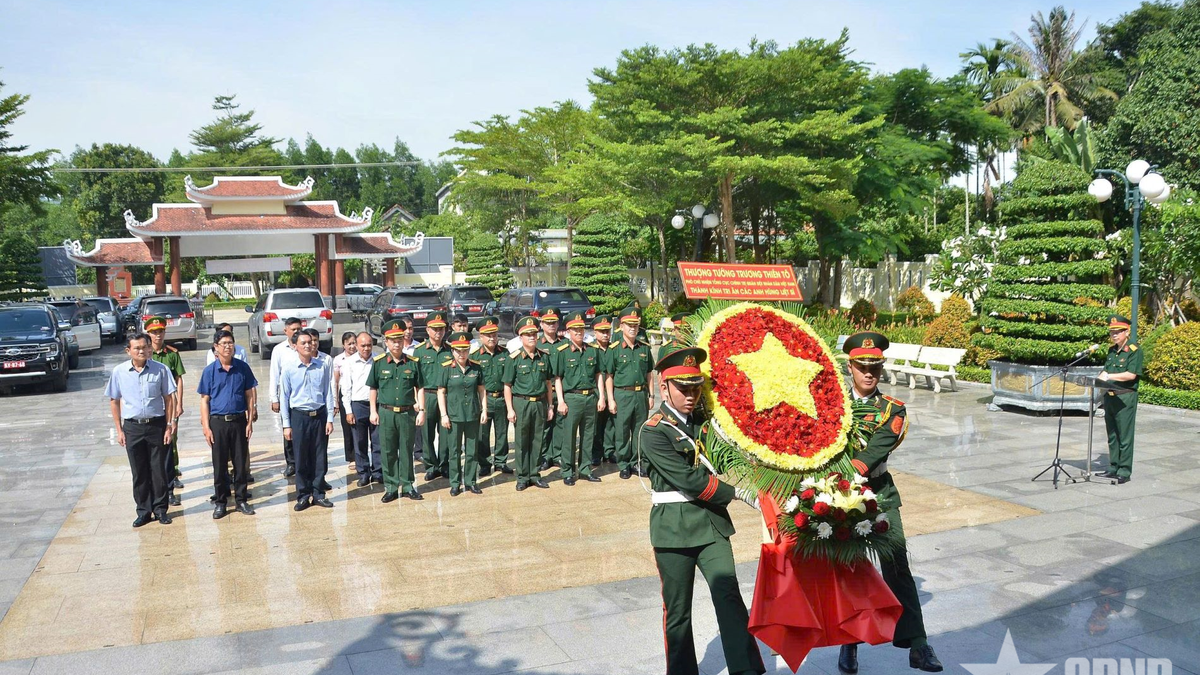





















































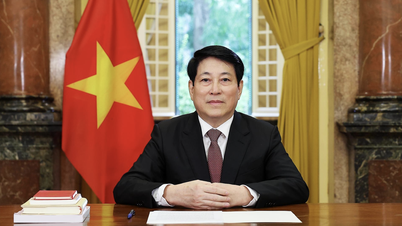

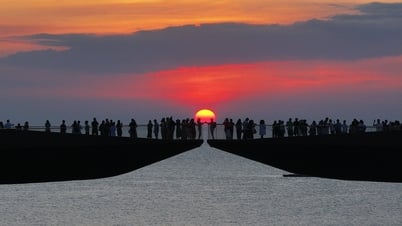

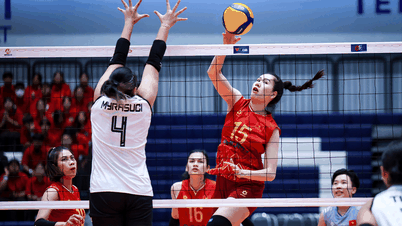
































Comment (0)